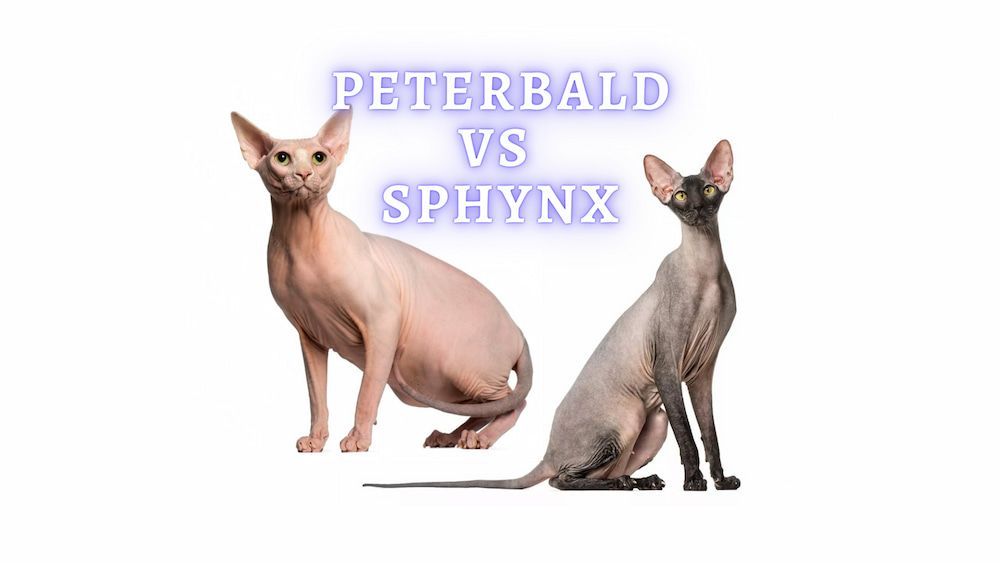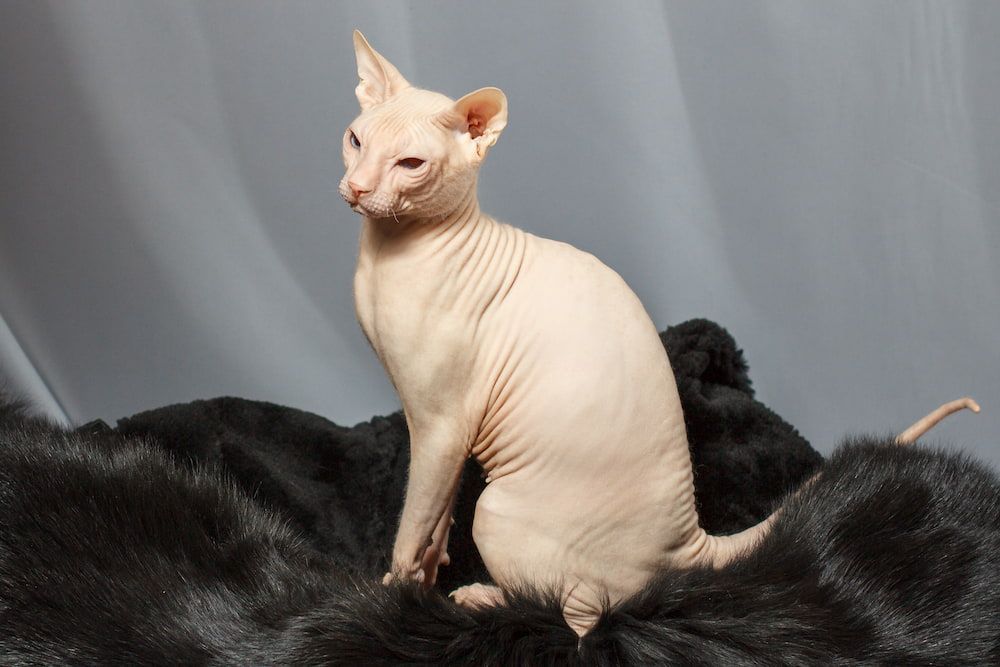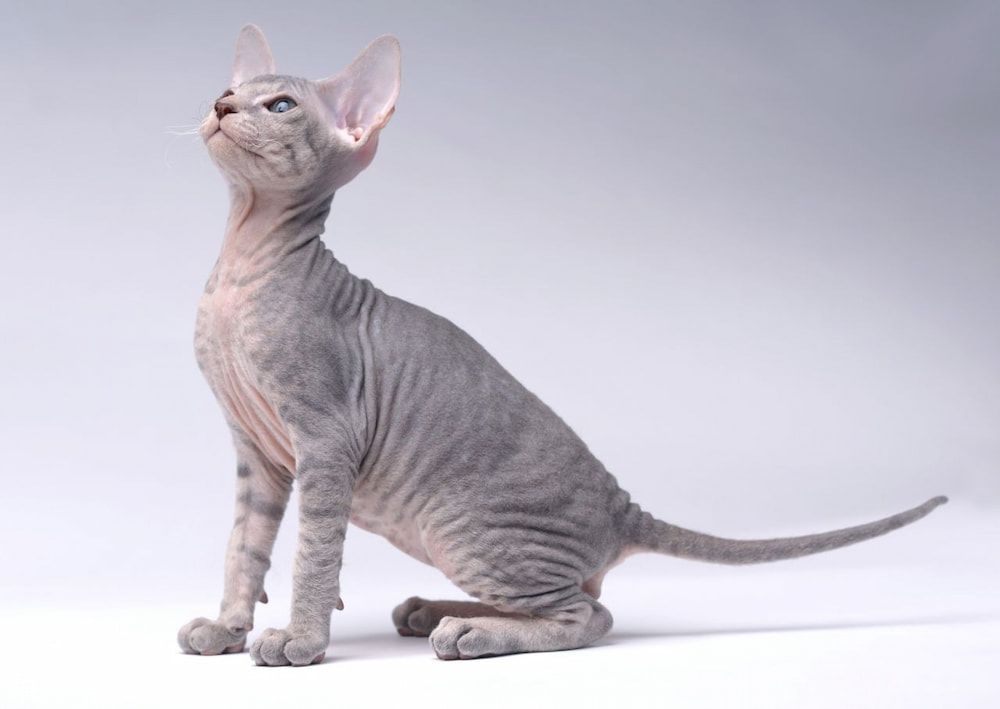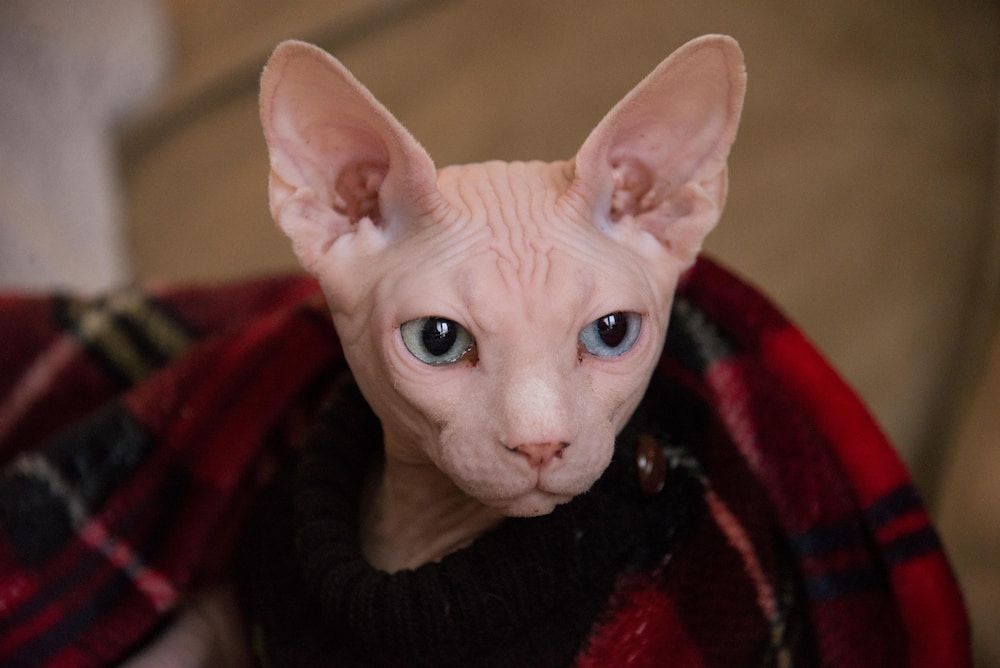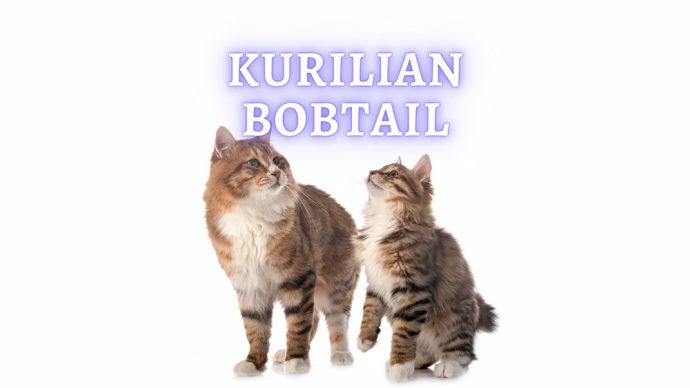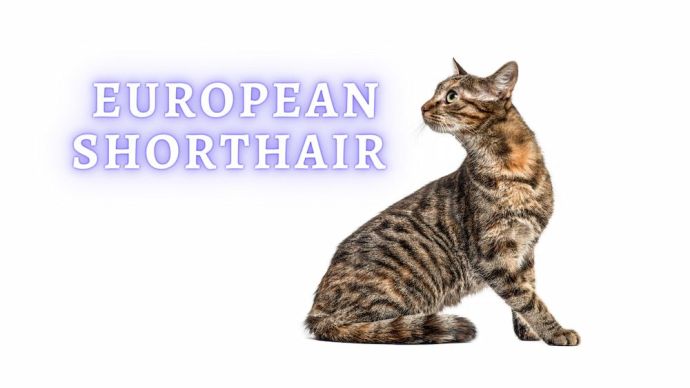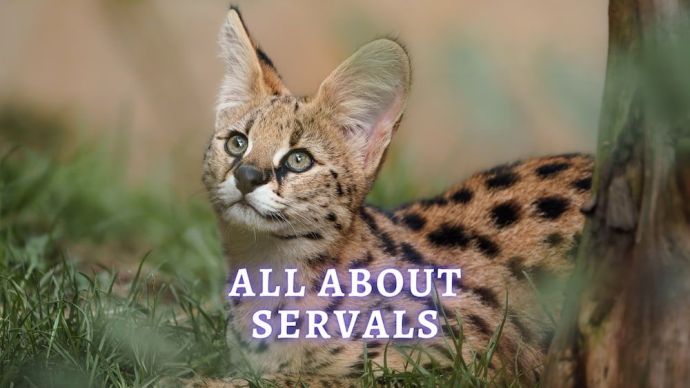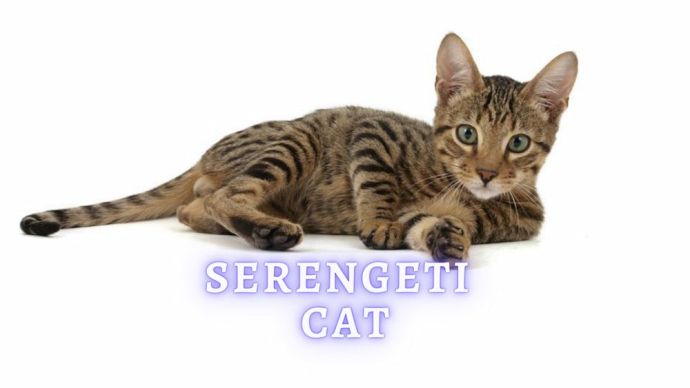Peterbald vs Sphynx: What is the difference between a Peterbald and a Sphynx cat?
Written by:
Author: Marissa Prizio
Marissa Prizio attended the University of New Hampshire and earned a bachelor's degree in biomedical Animal Science. Marissa has always enjoyed writing; she was even mixing literature classes into her science major in college. During her writing career, she has edited eBooks, written for a variety of websites, and created audio-visual courses for sustainability.
View all 36 articlesLearn about our editorial process and veterinary review board.
Viewed: 176
Updated on: 12/27/2022
Hairless cats are enchanting. Their unique appearance has made them popular pets, and even those who can not stand the sensation of their hairless skin can’t deny that they are iconic animals. Two cat breeds typically come to mind when looking for a hairless cat. The sphynx cat is possibly the most well-known furless feline, but the Peterbald cat is also sure to appear in your search for a furless friend.
Knowing the differences between these breeds is a fun way to impress your friends if you are a cat enthusiast. If you want a hairless cat to join your family, then knowing the difference plays an important role in determining the best breed for your needs.
Appearance comparison table
| Peterbald | Sphynx | |
| Weight | 6 to 10 pounds | 6 to 12 pounds |
| Build | Graceful and lean | Moderately muscular |
| Skin color | All colors and patterns are accepted | All colors and patterns are accepted |
| Furless Variations | Smooth bald to an even short coat | Hairless to a very fine down layer of fur |
| Eyes | Round to almond-shaped in any color | Large and round in any color |
| Ears | Large, elongated, and seated fairly high on the head | Large in comparison to the face, not as elongated, and seated higher on the head |
| Wrinkles | Notable, but less pronounced due to a fine layer of fur on some individuals | Pronounced wrinkles across the body and the face |
Regarding a Peterbald vs. Sphynx comparison, these two hairless cat breeds have a few distinguishing factors. While both hairless cats can have some hair due to genetic variations, Sphynx is more likely to be bald. These cat breeds are both born with hair; as they age, it thins out until some individuals lack hair.
READ MORE: Hairless Cat Breeds
What are the similarities?
Sphynx and Peterbalds are commonly confused due to their many similarities. When the two are not next to each other for a Peterbald vs Sphynx comparison, it is easy to confuse them. Both are considered an entirely to a mostly hairless cat breed, especially in contrast to other cats. Their short coat is often described as peach fuzz or like a buttery soft hot water bottle.
The hairless nature of these breeds emphasizes their wrinkled skin, which can come in various colors and patterns. Everything from mink patterns to solid colors have been seen in either breed because they result from genetic mutations requiring crossbreeding to maintain a diverse gene pool.
These distinct physical characteristics make both breeds strictly indoor cats that require regular maintenance for healthy skin.[1] [2]
What are the differences?
Once you move past the similarities between Sphynx and Peterbald, the Peterbald vs. Sphynx analysis highlights several specific differences.
The origins of each hairless cat breed seriously factor into their differences. The sphynx breed actually originated rather recently. This entire breed is the result of a kitten born in Canada in 1966 that had a genetic abnormality resulting in baldness.[1] Careful breeding and the inclusion of a few other naturally occurring hairless cats that were found resulted in the sphynx we know today. Many other cat breeds contributed to the sphynx before a variety of the sphynx went on to influence the creation of the Peterbald in a completely different country.
Peterbald cats are of Russian origin, and their hair loss gene relates to a variety of sphynx and oriental shorthairs. The almond-shaped eyes, longer heads, and large ears of the Peterbald are reminiscent of the oriental shorthair and siamese cat. Some kittens resemble oriental shorthairs more than others since the gene that causes fur loss is not dominant. This means some kittens from this breed develop a fur coat while others are completely hairless. [2] [3]
Size and coloring
Sphynx cats and Peterbald cats are the results of experimental breeding. These cat breeds are dependent on the continuation of a particular gene. To keep that gene alive without thinning out the gene pool, other breeds enter the lineage at points throughout the history of hairless cats.
This mixing of breeds has resulted in coloring and patterns of all varieties being recognized in either breed as long as they are entirely to mostly bald. The two breeds do differ slightly in size, with the sphynx being slightly larger and more robust while the Peterbald has a slimmer physique.[2] [4] The don sphynx, a relative of the sphynx, is a founding breed for the Peterbald. When the don sphynx was mixed with oriental shorthairs or siamese, the slender Peterbald build was born.
Temperament and Personality
Hairless cat breeds are known for their highly affectionate and playful nature. Both Peterbald and sphynx cats have been known to like other pets more than most other cats. Sphynx cats are even described as having a dog like behavior and thrive in households with two cats.[1]
Activity levels
The highly social nature of sphynx and Peterbald cats tends to result in high activity levels. These furless felines love to cuddle up and rest in a warm place, but any time they don’t sleep will be spent playing. Sphynx cats, in particular, will play with other pets even if they aren’t the same species, and proper care for both breeds requires adequate opportunities for activity.
Health and Care
A lack of fur does not equal a lack of grooming; instead, it is quite the opposite. Since hairless cat breeds do not have hair or fur to absorb their skin’s natural oils, they require weekly baths to remove excess oil and prevent skin issues.[1]
Proper care also suggests that hairless to mostly hairless cats are kept as indoor pets. This prevents their fragile skin from receiving too much direct sunlight and protects them from cold weather. Without a thick fur coat, Peterbalds and Sphynx are much more likely to get skin cancer from prolonged sun exposure or freeze in cold temperatures due to a lack of temperature control.
Due to a history centered around breeding for the recessive gene for hairlessness, health issues have worked their way into the sphynx cat. Of all the health problems that can result from careless breeding, hereditary myopathy is the most common and concerning in this breed.[1] [6] Hypertrophic cardiomyopathy is a heart disease that affects muscle function in the heart. This is a progressive disease with few treatment options and it can seriously decrease a cat’s life expectancy.[6] Educated and experienced breeding measures are the best prevention for this condition.
Aside from special grooming care and hereditary health concerns, both Peterbald and Sphynx are like most other cats. They require an appropriate diet, exercise, companionship, and plenty of litter boxes. If all of these factors are provided, you can predict a life expectancy of 15 to 20 years from a sphynx and 12 to 15 years from a Peterbald.[2] [4]
Cost
The unique coat of the sphynx and Peterbald put them in high demand. Couple their iconic looks with the fact that not every litter is guaranteed to produce 100% hairless kittens, and you get a recipe for price inflation.
Inexperienced breeders may pop up with less pricy kittens, but the health issues associated with hairless breeds make these sources a risky choice. A registered and well-experienced breeder is the best option if you are looking to adopt a healthy hairless kitten, but they certainly won’t be the cheapest option.
Since the sphynx breed is recognized by the cat fanciers association as a registered show breed, it is possible to obtain kittens with award-winning purebred lineages. Such cats can cost thousands of dollars, and even the less recognized Peterbald can top a thousand dollars depending on their coat and quality.
Adoption and Shelters
It can be difficult, but obtaining hairless cat breeds from shelters isn’t impossible. An adoption is always an option; some shelters even specialize in obtaining individual cats related to one of the two unique breeds discussed.
Hairless cats require much more grooming than people expect, some circumstances force people to adopt purebred pets, and sometimes poor breeding can result in chronic health issues. There are plenty of situations that can result in a sphynx or Peterbald entering the adoption system. You have to keep watch and be patient.
What breed is right for you?
Whether you invite a sphynx or a Peterbald cat into your home, you will be blessed with a unique and lively companion. You will surely be busy between maintaining their bare coat and providing plenty of play. The major deciding factors that need to be considered when deciding between these breeds are appearance, availability, and health problems.
Your preferred breed may be available somewhere other than local adoption or breeders exactly when you want. Plan ahead and prepare to be patient, or be flexible and choose whichever breed comes along first. If you are serious about having a sphynx, background checks your breeder and brace yourself for hereditary health problems.
FAQ
Is a Peterbald a Sphynx?
When it comes to Peterbald vs Sphynx comparisons, it is worth noting that Sphynx genetics contributed to the Peterbald breed, but they are considered two different breeds.
Is the Peterbald cat rare?
Any genetically hairless cat breed is rare, including the Sphynx cat.
How much is a Peterbald cat?
Due to the uniqueness and recent development of the Peterbald cat, purebred kittens from this breed can cost over a thousand dollars.
Article Sources:
- “The Sphynx.” The Cat Fanciers’ Association, cfa.org/sphynx/.
- “Sphynx.” Royal Canin, royalcanin.com/us/cats/breeds/breed-library/sphynx.
- “Sphynx Cat Breed.” Purina, purina.com/cats/cat-breeds/sphynx.
- “Peterbald.” Royal Canin, royalcanin.com/us/cats/breeds/breed-library/peterbald.
- “Peterbald Cat Breed.” Purina, purina.com/cats/cat-breeds/peterbald.
- “Hypertrophic Cardiomyopathy.” Cornell Feline Health Center, vet.cornell.edu/departments-centers-and-institutes/cornell-feline-health-center/health-information/feline-health-topics/hypertrophic-cardiomyopathy.
 Cat Breeds Silver Bengal Cat: Important Things You Need to Know Before Buying Silver Bengal Cat
Cat Breeds Silver Bengal Cat: Important Things You Need to Know Before Buying Silver Bengal Cat - 224
- 0
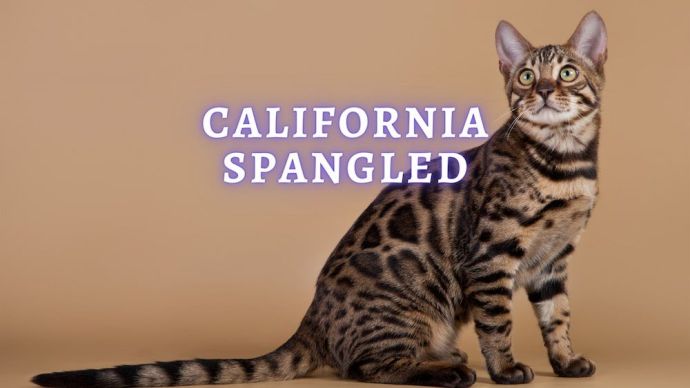 Cat Breeds California Spangled: California Spangled Cat Personality, Breed History, and Interesting Facts
Cat Breeds California Spangled: California Spangled Cat Personality, Breed History, and Interesting Facts - 271
- 0
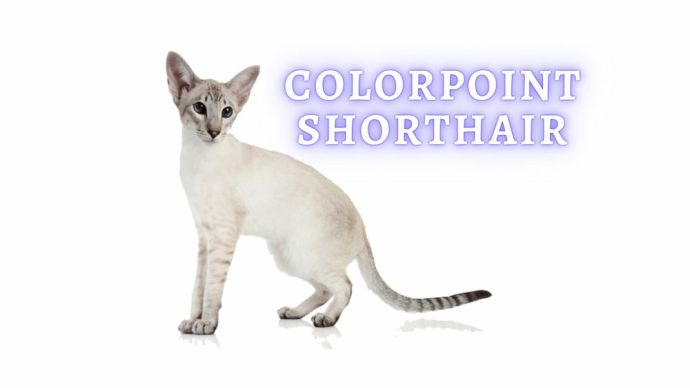 Cat Breeds Colorpoint Shorthair: Colorpoint Shorthair Cat Breed History, Temperament and Personality
Cat Breeds Colorpoint Shorthair: Colorpoint Shorthair Cat Breed History, Temperament and Personality - 226
- 0
 Cat Care Why Does My Cat Attack My Legs? 10 Reasons Why and What To Do About It (Vet-Approved Advice)
Cat Care Why Does My Cat Attack My Legs? 10 Reasons Why and What To Do About It (Vet-Approved Advice) - 45567
- 21
 Cat Veterinary Tips Cat Stomach Gurgling: Vet Advice on Why is Your Cat Stomach Gurgling?
Cat Veterinary Tips Cat Stomach Gurgling: Vet Advice on Why is Your Cat Stomach Gurgling? - 35340
- 4
 Cat Veterinary Tips My Cat Lost its Voice: Can Cats get Laryngitis? (Vet Advice)
Cat Veterinary Tips My Cat Lost its Voice: Can Cats get Laryngitis? (Vet Advice) - 23247
- 13









